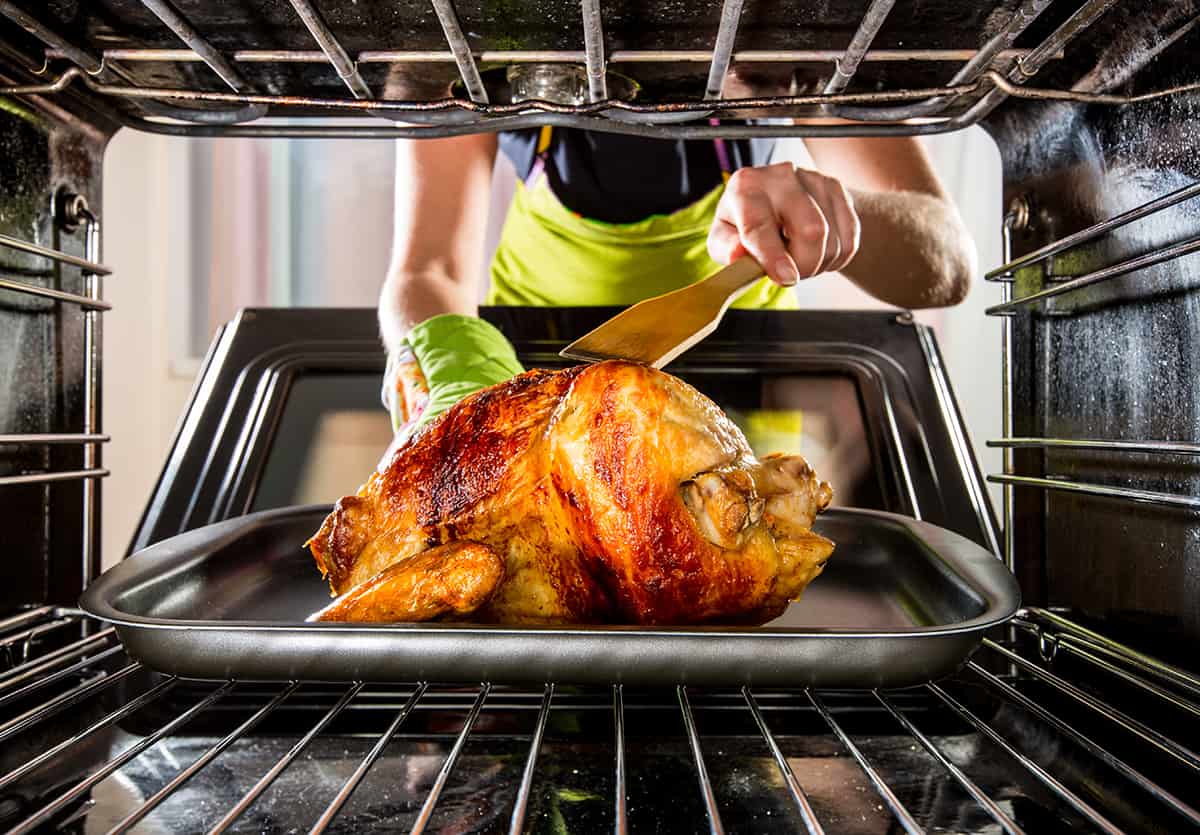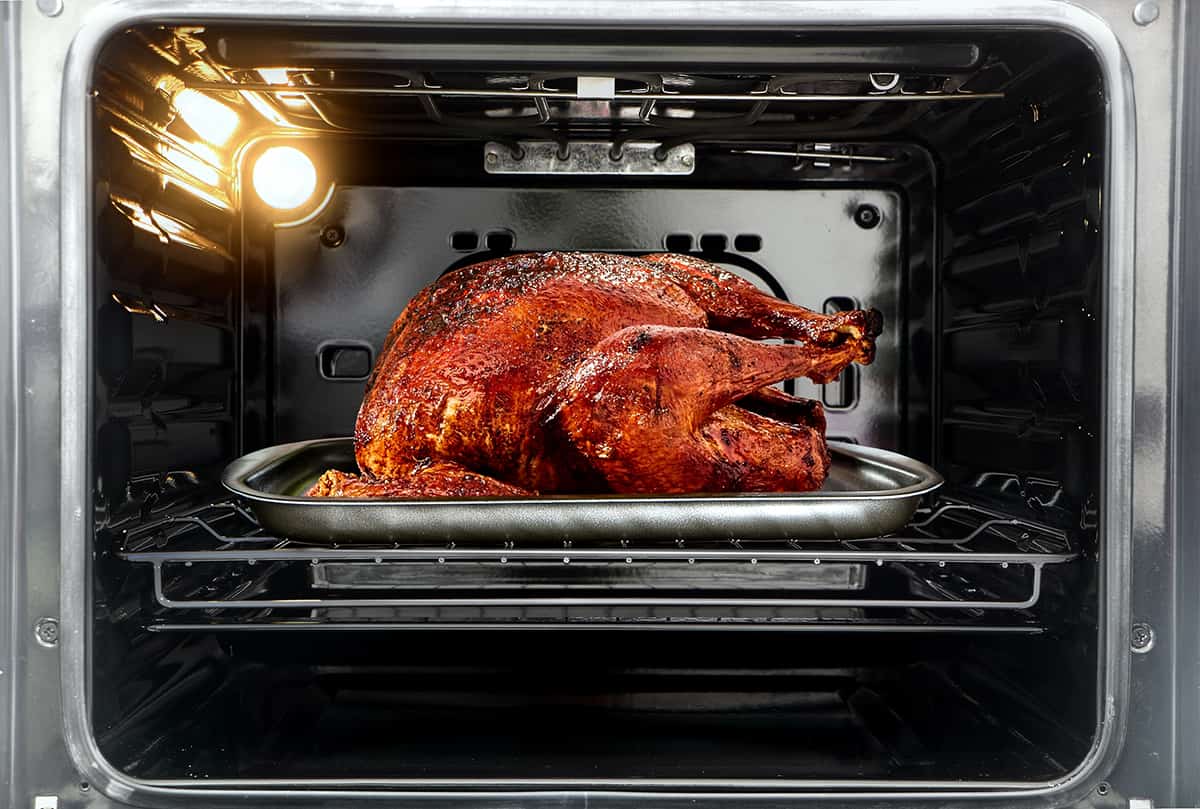Chicken is a lean and healthy meat full of protein, and it also has a mild flavor that appeals to most people, making it a popular choice for family meals. Cooking chicken in the oven will give you good results, and it’s much healthier than deep frying.
If your chicken has a coating, such as breadcrumbs or skin, then flipping it over in the oven halfway through its cooking time will help to ensure all of the outer layers gets crispy.
If you are cooking chicken breast, chicken drumsticks, or chicken thighs without their skin on, then flipping the chicken during baking is not essential. Some people prefer to flip their chicken to ensure even cooking, but in most modern ovens this isn’t going to make a great deal of difference.
Here we investigate when you should flip the chicken in the oven, and how best to oven-cook various types of chicken for the best results.
Do Chicken Breasts Need Flipping in the Oven?

Chicken breasts are among the most popular types of chicken to cook at home because they are so convenient in terms of both cooking and eating. Chicken breasts typically come in filets, which means the bones have been removed.
This makes it much easier for people, especially children, to eat. The way that you cook a chicken breast in the oven is going to vary according to the size of the chicken breast, and the recipe you are making.
There are a variety of ways to effectively bake delicious chicken breasts in the oven, and there is no single correct way, so you can adjust cooking methods to suit your taste and style.
In a modern fan oven, the oven is designed to provide an even temperature across the whole of the space.
This means that the chicken will cook thoroughly and evenly, whether or not you flip it over during its cooking time. If you prefer low-maintenance cooking styles, then you can simply lay out your chicken breast on an oiled baking tray, and set it in the oven for its whole cooking duration, without interfering with it.
The chicken breast will cook perfectly well, even without being flipped. If you prefer to be more involved with your cooking, you can flip the chicken halfway through cooking to help it get a similar texture on the whole of its exterior. When you don’t flip the chicken breast, you will end up with a crisper outer layer on the upper part of the chicken, and a softer outer layer on the underneath of the chicken, where it has been in contact with the baking tray.
This works well for a wide variety of meals, for example, if you are going to chop up the cooked chicken and toss it into a salad, or if you are serving the chicken breast alongside mashed potatoes and vegetables.
However, if you are keen to have a crispy outer surface on the whole of the chicken breast, you can achieve this by flipping it over halfway through its cooking time.
How Long to Cook Chicken in Oven
The length of time your chicken should spend in the oven will be influenced by a number of factors. Whether or not the chicken has a bone will affect its cooking time, with boneless joints of chicken cooking more quickly.
However, the size or weight of the chicken is what is going to impact the cooking time the most. For best results, cooking chicken at higher temperatures is recommended. This will seal the outside of the chicken to keep the moisture and flavor inside, for a juicy and delicious result. As a general rule, when cooking at a temperature of 425°F (220°C), each 5 ounces of chicken weight will add an extra 10 minutes of cooking time.
For example, a 5-ounce chicken breast will cook in around 10 minutes, a 10 ounce chicken breast will cook in 20 minutes, and a 15 ounce chicken breast will cook in 30 minutes. Another way to estimate a chicken’s cooking time is to weigh it and then double the number.
This will give you the number of minutes it needs to be cooked for. For example, a 7-ounce chicken breast should cook in 14 minutes, or an 8-ounce chicken breast should cook in 16 minutes. For accuracy, it is best to take the internal temperature of a chicken right after it comes out of the oven.
In order to ensure it is safe to eat, it should reach a minimum internal temperature of 165°F or 74°C. If you don’t have a meat thermometer, slice the chicken and check its color and texture. If the meat has turned white and flaky, then it is appropriately cooked.
How to Ensure Even Cooking with Oven Chicken

As you will have noticed, cuts of chicken do not typically take a symmetrical or uniform shape. Instead, chicken breasts will be fat and chunky at one end, and thin and narrow at the other end. This can make them tricky to cook evenly because the chunkier end will need longer to cook all the way through, during which time the thinner end can wind up getting dry and tough.
While flipping the chicken over can help to ensure even cooking, there are other methods you can use to give you better results. The best thing you can do is to even out the shape of the chicken before you cook it. You can do this with a meat mallet or a rolling pin, and simply bash the chicken breast so that the thickness is fairly uniform all the way across.
This will help the meat to cook more evenly, ensuring a juicy and delicious chicken breast that doesn’t have any overcooked spots. You should also try to cook chicken breasts of the same size for the same length of time. For example, if you have two small breasts and two large breasts, be sure to take the two smaller breasts out of the oven a few minutes before the larger breasts. If you cook them all until the larger breasts are finished, then the smaller breasts are likely to be dried out and tougher to eat.
Tips for Juicy Oven Cooked Chicken
If you think of oven-cooked chicken as being dry and tough, then you’ve been cooking it wrong! Baking chicken in the oven is quick and easy, and it can result in some really flavorful and healthy meals. To ensure your chicken stays juicy and moist, try these tips:
Brine the chicken
You can brine a chicken by submerging the meat in a cooled, flavored brine overnight in the refrigerator. You could use salted water, or water flavored with herbs and spices. The brine helps to keep the chicken moist throughout the cooking process.
Cook in sauce

If you cook the chicken in a sauce, such as gravy or casserole, it will stay tender and juicy, because the sauce protects it and prevents any drying out.
Baste the chicken
You can baste the chicken by removing it from the oven every 10 minutes, and pouring the cooking juices from the baking dish over the top of the meat.






